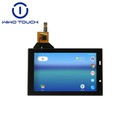Protein electrophoresis has become an important technical tool in biomedical research, clinical diagnosis and other fields. And the application of touch screen technology will bring more convenience and intelligence to the operation of protein electrophoresis instrument.
Protein electrophoresis technology requires a high level of experimental skills and experience, while the application of touch screen technology will make the experimental operation easier and more intuitive, reducing the difficulty of the experiment and human error. This provides researchers and clinicians with better experimental tools and helps to improve the accuracy and reliability of experiments.
Protein electrophoresis technology needs to deal with a large amount of data and images, and the application of touch screen technology will make data processing and analysis more efficient. Through the touch screen, the experimenter can easily view, store and manage the experimental data, which facilitates the subsequent data processing and analysis. This will help researchers and clinicians better understand experimental results and improve the efficiency and quality of experiments.
With the rapid development of proteomics, glycomics and other fields, protein electrophoresis technology will face more challenges and opportunities. And the application of touch screen technology will help to improve the intelligence of protein electrophoresis technology and adapt to the changing application needs. For example, through the touch screen technology, the experimenter can conveniently adjust the electrophoresis parameters and control the electrophoresis process to improve the flexibility and controllability of the experiment.
Touch screen as the human-machine interface of protein electrophoresis instrument has the following benefits:
Intuitive and easy to use: The touch screen provides an intuitive graphical interface, which makes it easy for the experimenter to set the electrophoresis parameters and control the electrophoresis process, which reduces the difficulty of operation and improves the efficiency of the experiment.
Data management: The touch screen interface makes it easy for the experimenter to operate the instrument, which facilitates the subsequent data processing and analysis. At the same time, through the touch-screen interface, the experimenter can also easily mark the data, annotation and export operations to improve the efficiency and quality of data processing.
Flexible scalability: touch screen technology provides good scalability, and new functions and interfaces can be added as needed. For example, automatic calculation, automatic analysis and other functions can be added to further improve the intelligence of electrophoresis experiments.
Improvement of safety: The touch screen interface can provide more friendly safety tips and operation instructions, which reduces the operation risk and improves the safety of the experiment.





